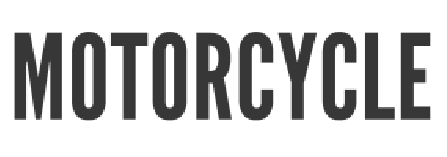"The Wild One" was a movie which was based on the supposed events which occurred during the annual Gypsy Tour in Hollister, California in 1947. If you read my previous blog post, you'll see that the so called riots and terrorism that occurred in this little town were totally fabricated by the media and some of the minor incidents that did happen were so blown out of proportion that it caused quite a sensation with the general public.
Of course, the movie certainly took advantage of the drama that supposedly took place in Hollister and just added to the sensationalism and subsequent paranoia with the public.
Here's some crazy facts about the movie that should give you a chuckle.
The movie was actually banned in the U.K. for almost 13 years and when it did make it past the censors, it received an 'X' rating.
Triumph, who's motorcycles were ridden by the Black Rebel Motorcycle Club in the movie, was quite upset that their bikes were used and associated with "outlaws', though they may have changed their tune when sales of their bikes went up considerably.
The Triumph that Marlon Brando rode in the movie was his own, personal bike, a 650c.c. Thunderbird. However, in many of the scenes and stills that were taken during the shoot, Brando rode several different bikes, including a Mottoguzzi and a Matchless.
Lee Marvin, who played Chino in the movie, could not ride a motorcycle when cast for the role and had to learn. He loved riding so much that he went on to own a Triumph 200c.c. Tiger Cub and race motorcycles.
Marvin's character, Chino, was inspired by Willie (Wino Willie) Forkner, who rode with The Boozefighters Motorcycle Club. The Boozefighters, co-incidentally, were in attendance at Hollister during the so-called riots.
Lee Marvin's motorcycle club in 'The Wild One' was called The Beetles. If you consider that the iconic Wild One profile photo of Marlon Brando (in his hat) appears on the album cover of 'Sgt. Peppers Lonely Hearts Club Band' and that a scene from 'The Wild One' appears in the 'Beatles Anthology' documentary, is it a safe assumption that the Beatles may have been influenced by the movie which came out in the U.K. about the same time the band formed?
 |
| Matchless twin cylinder (with the M turned upside down because the bike belonged to stunt rider Wally Albright) |
 |
| Eyes up, Marlon! |
 |
| "I fought the law" |
 |
| Iconic pose |
 |
| Original screen shot |
 |
| The Black rebel M.C. v.s. The Beetles |
 |
| Black leather jackets and tight sweaters |
 |
| Another original still |
 |
| Hooliganism!! |





























































